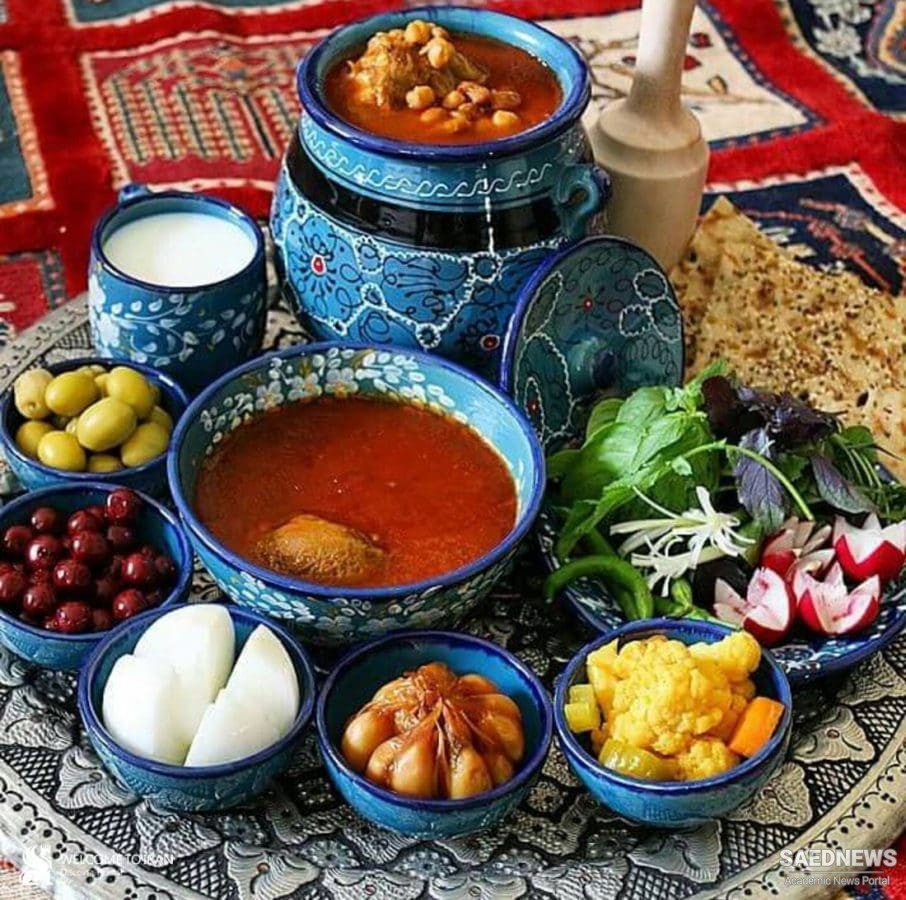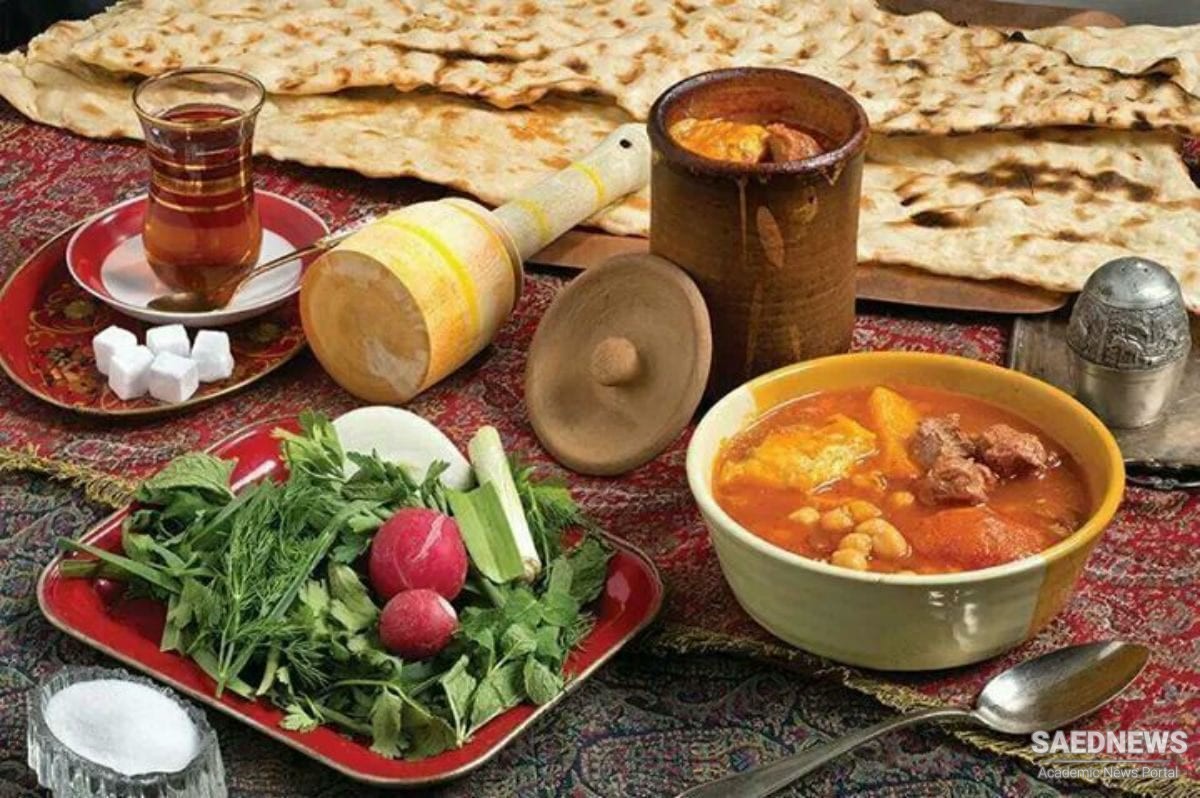Abgoosht can also be called Dizi, named after the ceramic or stone dish in which it was cooked. It is a true one pot meal that can be consumed in a variety of different ways, the simplest being straight out of the pot just like other stews. It is often served alongside Sabzi Khordan (fresh herbs).
However, after cooking, many Iranians separate the broth from the rest of the ingredients. Sangak bread is then added to the broth, and the broth-soaked bread combination, called Tileet, is eaten on its own as a first course.
The remaining ingredients – the meat, vegetables and beans – are then mashed using a tool called a Goosht Koob, which translates to “meat masher”. Once mashed, the transformed dish is called Kubideh.
# Place the meat, onions, garlic, water, beans and wheat and turmeric in a large, heavy pot. Bring to a boil, skimming the froth as it forms.
# Cover and gently simmer for 90 minutes over low heat.
# Add the remaining ingredients. Keep covered and continue to simmer for another 45 to 60 minutes over low heat. Check to make sure that the meat, beans and potatoes are fully cooked and tender. Adjust the seasoning as needed.
# Using a colander or slotted spoon remove all the meat, beans and vegetables from the broth, place them in a mixing bowl and set aside.
# Pour the broth into a soup bowl and serve it with pieces of Sangak bread floating in the bowl.
# Debone the meat and mash the meat mixture with a potato masher or a Persian Goosht Koob. This mixture should have the consistency of lumpy mashed potatoes.
# Place the Goosht Kubideh (mashed meat) on a serving platter and serve with a platter of fresh herbs and Sangak bread.



 Iranian Main Courses: Zereshk Polo ba Morgh (Saffron Barberry Rice With Poussin)
Iranian Main Courses: Zereshk Polo ba Morgh (Saffron Barberry Rice With Poussin)














































